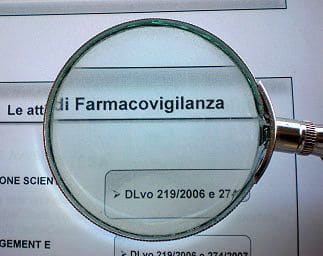
With reference to the three-year period 2014-2016, it is above all doctors who point out the collateral risks of medicines (75%). Enrico Magni, director of GK Pharma Consultants, took stock of the situation during the fourth edition of "FarmacistaPiù"
Of Aboutpharma Online editorial staff – March 20, 2017 – Aboutpharma
Up almost 25 thousand reports of adverse drug reactions (ADRs) surveyed in the period 2014-2016 by Asgenia (company of services for the pharmacovigilance of Assogenerici) the 75% (for a total of 18,211) was found to come from doctors against a 16% of reports received from pharmacists (3,867 in absolute numbers) and a 7% from other healthcare professionals (1,664 reports).
 Enrico Magni, an expert in clinical research, director of the company GK Pharma Consultants and scientific consultant of Assogenerici and Asgenia, drew up the balance, in his report at the conference on the role of the territorial pharmacist in pharmacovigilance organized on Saturday 18 March in Milan, as part of the IV edition of “PharmacistMore”, annual appointment for Italian pharmacists promoted by Fofi.
Enrico Magni, an expert in clinical research, director of the company GK Pharma Consultants and scientific consultant of Assogenerici and Asgenia, drew up the balance, in his report at the conference on the role of the territorial pharmacist in pharmacovigilance organized on Saturday 18 March in Milan, as part of the IV edition of “PharmacistMore”, annual appointment for Italian pharmacists promoted by Fofi.
As regards in particular the ADRs reported by pharmacists, there were 1,804 adverse reactions. Of the first, as many as 82% (1,482 in absolute numbers) came from the pharmacists of the Lombardy Region, the results in this partial ranking being the absolute protagonists of the reporting activity, in a panorama that sees pharmacists decidedly not very active on the pharmacovigilance front.
“The legislation in force – Magni recalled – provides for the obligation to promptly report suspected adverse reactions from drugs and vaccines. In particular, suspected adverse drug reactions must be reported within two days (36 hours in the case of biological drugs) from when the doctor or healthcare professional becomes aware of them. We have a complex and efficient pharmacovigilance network within which, however, it is necessary to report more and report better”, continued Magni, summarizing the main criticalities revealed by the analysis of the reporting forms. "The errors more frequent – he explained –  they concern the patient's personal data or the identification of the type of adverse reaction (e.g. hospitalization or death are not ADRs, except sudden death, ed.). But often there is also the inclusion in the network of reports concerning ADR that occurred even several years earlier”.
they concern the patient's personal data or the identification of the type of adverse reaction (e.g. hospitalization or death are not ADRs, except sudden death, ed.). But often there is also the inclusion in the network of reports concerning ADR that occurred even several years earlier”.
From an analysis carried out on one hundred reporting forms - Magni reported again - a percentage of, for example, emerged 58% errors: the 30% related to laboratory tests; the 22% to important medical events (that is, included in the Ime list drawn up by the experts of Eudravigilance, the European Pharmacovigilance network, ed.), erroneously classified as "non-serious"; the 18% due to discrepancies between the date of insertion and the date of the Adr.
Related news: Monitoring in the EU
Suspected adverse drug reactions. It is possible to report them online on Vigifarmaco.it. Ed





